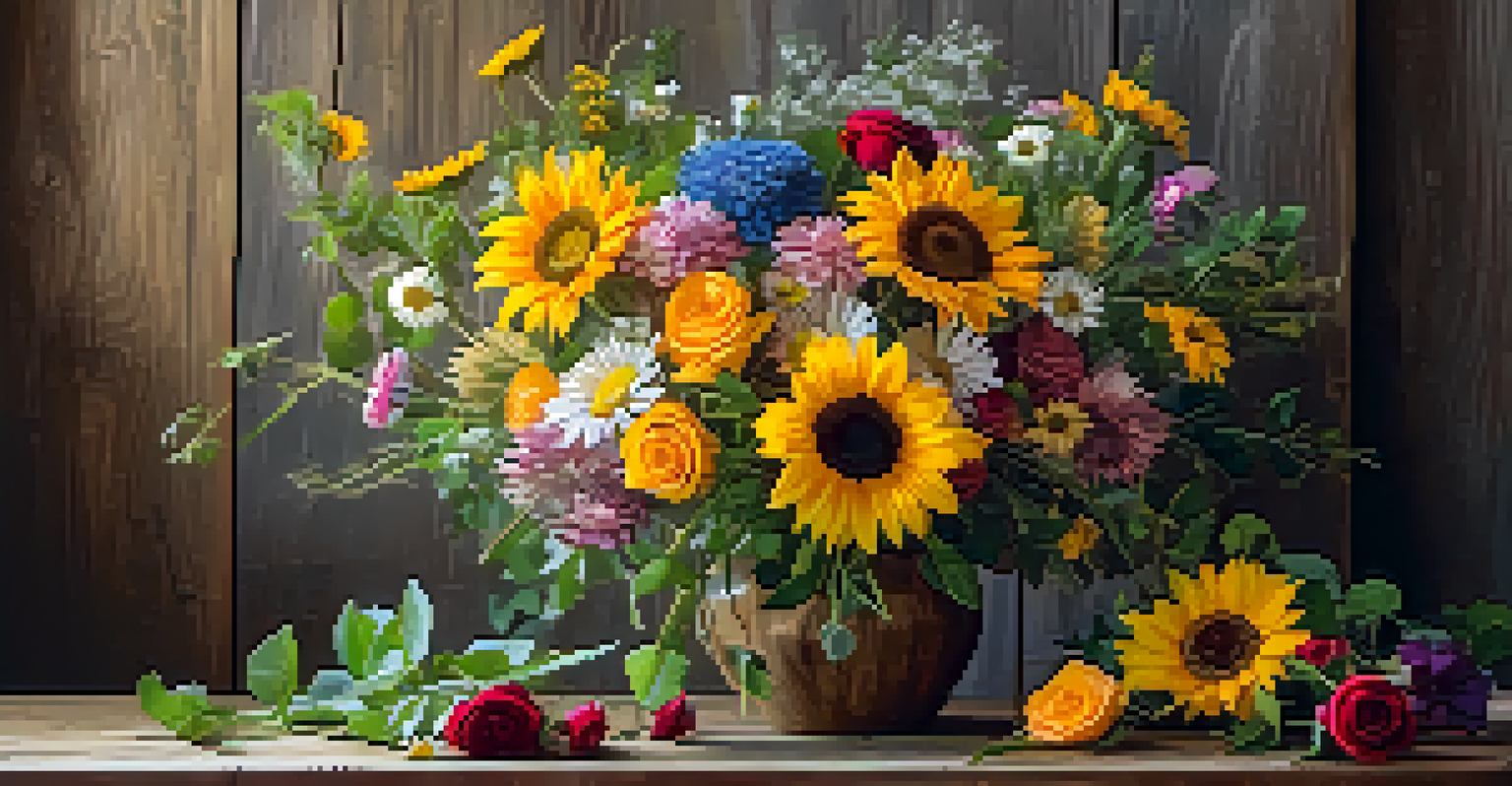Exploring the Emotional Power of Color in Visual Art

Understanding Color Theory and Its Basics
Color theory is a framework that artists use to understand how colors interact and influence perception. At its core, it explores the relationships between colors and how they can evoke different feelings. For instance, warm colors like red and orange can stimulate energy and passion, while cool colors like blue and green often convey calmness and serenity.
Color is the keyboard, the eyes are the harmonies, the soul is the piano with many strings.
Artists often refer to the color wheel, which visually represents primary, secondary, and tertiary colors. By understanding these relationships, they can create harmonious compositions that resonate with viewers emotionally. This foundational knowledge allows artists to manipulate color effectively to enhance their storytelling.
Moreover, color theory is not just a technical aspect; it also delves into the psychological responses colors can invoke. Knowing that a specific shade can trigger memories or feelings helps artists connect more deeply with their audience, making their work more impactful.
The Psychological Effects of Color Choices
Colors possess psychological meanings that can significantly affect our emotions and behaviors. For example, yellow is often associated with happiness and optimism, while black can evoke feelings of sadness or elegance, depending on the context. This emotional language of color allows artists to express complex ideas and narratives without using words.

Consider Van Gogh's use of vibrant yellows in 'Sunflowers.' The radiant hues not only capture the beauty of the flowers but also convey a sense of warmth and joy. On the flip side, darker tones in Edvard Munch's 'The Scream' amplify feelings of anxiety and existential dread, demonstrating how color choices can set the emotional tone of a piece.
Colors Influence Emotions and Perception
Color theory reveals how different colors can evoke specific feelings, allowing artists to connect with their audience emotionally.
By carefully selecting their palette, artists can guide viewers through a spectrum of emotions, creating a more immersive experience. This interplay between color and psychology is why certain artworks resonate with us on a personal level.
Cultural Significance of Colors in Art
Colors also carry different meanings across cultures, adding another layer of complexity to their emotional power. For instance, while white symbolizes purity and peace in Western cultures, it may represent mourning in some Eastern traditions. Understanding these cultural nuances is crucial for artists aiming to communicate effectively with a global audience.
Color is a power which directly influences the soul.
Take the use of red, which can signify love and passion in many cultures, but may represent luck and prosperity in Chinese culture. Artists often navigate these cultural interpretations to ensure their message is received as intended, fostering a deeper connection with diverse viewers.
By incorporating culturally significant colors into their work, artists can evoke a sense of belonging or challenge societal norms, making their pieces not just visually stunning but also rich in meaning.
Color as a Narrative Tool in Visual Storytelling
In visual art, color serves as a powerful narrative tool that helps tell a story beyond the subject matter. Through the skillful use of color, artists can evoke emotions and set the mood, guiding viewers through the narrative's highs and lows. Think of a painting that transitions from vibrant reds and yellows to somber blues; this shift can signify a journey of triumph followed by despair.
For example, in Pablo Picasso's 'Blue Period,' the predominant blue tones reflect a sense of melancholy and introspection, highlighting the emotional struggles he faced during that time. This color choice not only enhances the artwork's theme but also invites viewers to empathize with the artist's experiences.
Cultural Meanings Shape Color Use
Colors carry different meanings across cultures, making it essential for artists to understand these nuances to communicate effectively.
By using color strategically, artists can transform a simple scene into a profound emotional experience, allowing their audience to engage with the story on a deeper level.
The Role of Color in Modern Art Movements
Modern art movements have embraced color in innovative ways to challenge traditional perceptions and evoke strong emotional responses. Abstract expressionism, for instance, often places emphasis on color as a means of expression rather than representation. Artists like Mark Rothko used large blocks of color to provoke feelings of awe, contemplation, or even discomfort.
In contrast, pop art utilized bright, bold colors to critique consumerism and mass culture, creating an emotional dialogue with viewers. Artists like Andy Warhol transformed everyday objects into art, using vibrant colors to draw attention and spark conversations about society.
These modern approaches to color have reshaped how we understand emotional expression in art, proving that color is not just a visual element but a powerful narrative force that can challenge and inspire.
Blending Color and Emotion in Digital Art
With the rise of digital art, artists now have an array of tools to manipulate color in ways previously unimaginable. Digital platforms allow for experimentation with color gradients, saturation, and light effects, enabling artists to create immersive emotional experiences. This flexibility fosters creativity and invites artists to explore new emotional dimensions in their work.
For instance, digital artists can easily adjust color palettes to elicit specific feelings, whether through soft pastels for a dreamy atmosphere or bold, contrasting colors for high energy. This adaptability has made it easier for artists to connect with audiences on a more profound emotional level.
Modern Art Explores Color's Power
Contemporary art movements utilize color not just as a visual element but as a narrative tool that challenges perceptions and evokes strong emotional responses.
Moreover, the accessibility of digital art means that artists can share their work globally, reaching diverse audiences and sparking emotional reactions across cultures. This democratization of art allows for richer dialogues about color and emotion in contemporary society.
The Future of Color in Visual Art
As we look to the future, the role of color in visual art will continue to evolve alongside technology and societal changes. Emerging artists are experimenting with augmented reality and virtual reality, creating immersive environments where color can be experienced in entirely new ways. These innovations are set to deepen our emotional engagement with art.
Furthermore, as awareness of color psychology grows, artists may increasingly use color to address social issues, utilizing their work as a form of activism. For example, color can be employed to raise awareness about mental health, environmental issues, or cultural identity, sparking conversations that resonate with viewers.

Ultimately, the emotional power of color will remain a vital aspect of visual art, inviting artists and audiences alike to explore complex feelings and shared experiences, ensuring that color continues to play a pivotal role in our understanding of art.